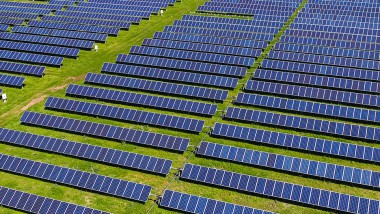Indices in Hot Water
Indices representative of the World and European economy are carbon-intensive with a climate footprint of +5.4°C for the CAC 40 vs. +4.1°C for the MSCI World and +4.8°C for the Stoxx 600. Climate-aware investment strategies have to go beyond the replication of major indices, as no index is currently in line with the +2°C objective.
Key Takeaways:
- Mirova has developed a methodology for measuring the climate footprint of our investments, as well as that of primary market players.
- Indices representative of the World and European economy are carbon-intensive with a climate footprint of +5.4°C for the CAC 40 vs. +4.1°C for the MSCI World and +4.8°C for the Stoxx 600. Mirova’s innovative methodology is based on data that takes into account not only direct and indirect induced greenhouse gas emissions, but also emissions avoided. This technique promotes the development of low-carbon solutions.
- Investment strategies that do not simply reproduce the major market indices must be developed, as no index is currently in line with the +2°C objective.
Resources
Financially speaking, this means taking into account the risks and opportunities created by the energy transition, which is undeniably already underway. It has since become evident that the rapid development of renewable energy and new energy-efficient technologies and behaviours is dramatically altering entire components of the economy. Although passive managers have made the choice not to choose, active managers can no longer ignore this issue.
In assuming their responsibility, active managers must contribute by allocating the capital at their disposal to the resolution of the climate change problem. Prioritising capital allocation to companies that develop solutions to combat climate change means decreasing their financing costs, and therefore encouraging their potential for innovation. If these strategies are well thought-out, they complement and fuel each other: seizing new investment opportunities generates better medium-term profits while promoting a sustainable climate, which will in turn ensure better profits on the long term.
The active manager’s trajectory is thus clear. However, before we can know where we’re going, we first must understand where we are. This is why we at Mirova have developed a methodology for measuring the climate footprint of our investments, as well as that of primary market players. As counter-intuitive as it seems, the Paris financial market’s flagship index, the CAC 40, is one of the most carbon-intensive indices in the world. However, the indices most representative of the world or European economy, such as the MSCI World or the Stoxx 600, are not to be outdone. We calculated a climate footprint of +5.4°C for the CAC 40 vs. +4.1°C for the MSCI World and +4.8°C for the Stoxx 600. Our innovative methodology is based on data that takes into account not only direct and indirect induced greenhouse gas emissions, but also emissions avoided. This technique promotes the development of low-carbon solutions.
The world and European indices still have a long way to go as far as these issues are concerned. This is because the macro-sectors most exposed to climate change (primarily energy, but also resources, buildings, and mobility) are heavily present in the major indices. Furthermore, big companies in these sectors have yet to sufficiently develop innovative, low-carbon solutions to compensate their presence in the old economy. Let us be clear, we do not intend to leave it completely behind as we move forward, rather we seek a balance with the new economy. It is at this intersection that we find one of the defining characteristics of the world economy: it is rich in large industrial groups, yet suffers from a lack of risk capital for new companies. We do not doubt that the ability to innovate exists in large international companies (we do invest in some of them), but we find that this potential is not sufficiently developed, promoted, or communicated.
We draw the following conclusions:
- Investment strategies that do not simply reproduce the major market indices must be developed, as no index is currently in line with the +2°C objective;
- In order to do so, investment universes must be widened to include medium-sized and international companies;
- As an active manager, we must continue our engagement efforts in order to develop better company communication (and practises) on climate issues;
- Climate footprint methodologies should continue to be developed, particularly for index construction and index investment solutions, so that investors are better informed on their investment decisions and the consequences thereof.
MIROVA
A subsidiary of Natixis Asset Management
Limited liability company
Share Capital: €7 641 327.50
Regulated by the Autorité des Marchés Financiers (AMF) under n° GP 02014.
RCS Paris n° 394 648 216
21 quai d’Austerlitz 75013 Paris France
www.mirova.com
This communication is for information only and is intended for investment service providers or other Professional Clients. The analyses and opinions referenced herein represent the subjective views of the author as referenced unless stated otherwise and are subject to change. There can be no assurance that developments will transpire as may be forecasted in this material.
Copyright © 2017 Natixis Investment Managers S.A. – All rights reserved





 Mirova's Responsible Investment Report
Mirova's Responsible Investment Report
 COP21, The Force Awakens
COP21, The Force Awakens
 The Greening of Corporate Culture
The Greening of Corporate Culture
 Mirova's Insights
Mirova's Insights